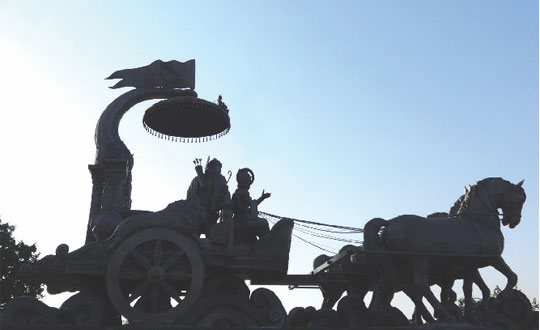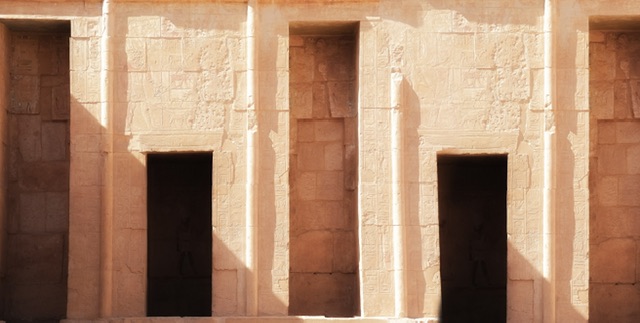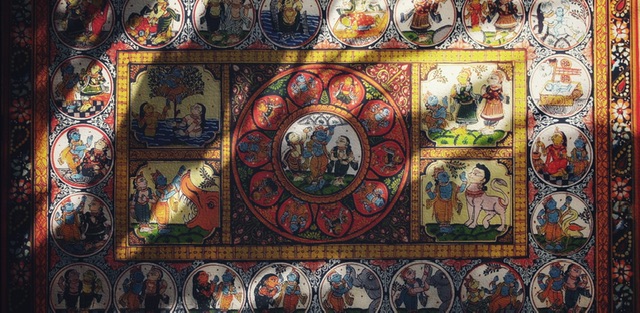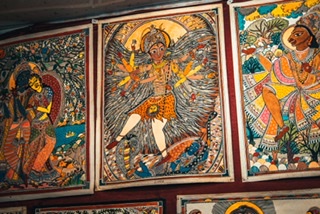Located at a distance of 177 kms from Delhi in the state of Haryana, Kurukshetra is a town where history blends with legends.
Years ago, King Kuru chose this land on the banks of river Saraswati for embedding spirituality with 8 virtues: austerity (tapa), truth (satya), forgiveness (kshama), kindness (daya), purity (suchee), charity (daan), yagya and brahmacharya. Lord Vishnu impressed with the act of King Kuru, blessed him and gave him two boons; one, that this land forever will be known as a Holy Land after his name as Kurukshetra (the land of Kuru) and the other that anyone dying on this land will go to heaven.
While Kurukshetra became known from the times of Mahabharat war and as the land where Krishna gave the gyan of Gita to Arjuna, this land has stood witness to reservoirs of gyan in the form of Manu Smriti and Rig and Samveda, all three of which were compiled here, the land being described as Dharmakshetra in the Gita.
Some places to visit:
Brahma Sarovar: The biggest lake in Kurukshetra, the Brahma Sarovar houses many bathing ghats associated with characters from Mahabharat. According to puranic texts, Lord Brahma created the entire cosmos from this place. Lord Krishna, Balrama and Subhadra came here to take a dip on the day of solar eclipse. Nanda, Yashoda and Radha also joined them, this being the final meeting place of Krishna and Radha. This is also the place where Bhima offered the blood of Dushasana to Draupadi to fulfill her oath of washing her hair with his blood.
Jyotisar: It is the sacred spot where Lord Krishna delivered the eternal and timeless sermon of the Bhagvad Gita. One survivor from that time is a banyan tree, 5,000 years old; under whose gnarled and twisted branches is a marble chariot in which sit Lord Krishna and Arjuna. Legend has it that it was at this spot that Lord Krishna stopped the chariot between the two warring armies to deliver the teachings of Gita to Arjuna. Carved out in marble, are the footprints of Lord Krishna. Recently, a Sound and Light Show, on the theme of Bhagvad Gita has been mounted by ITDC and Haryana Tourism at Jyotisar.
Ban Ganga/Bhishma Kund: It is the spot where the great warrior Bhishma fell on the battle field on the 10th day of the Mahabharat battle on a bed of arrows after Arjuna’s attack. Bhishma being granted the boon of death at will decided to wait till the period of uttarayana before leaving his body. He asked his grandsons to bring him water. Kauravas offered him all kinds of drinks and coolers, but Bhishma refused. He looked at Arjuna, who closed his eyes and shot an arrow, a fountain of Ganges water (Ban Ganga) emerged from the place on earth where the arrow landed. Bhishma quenched his thirst.
Sannihit Sarovar: It is the meeting point of seven sacred Saraswatis and contains sacred water. It is said to be the abode of Lord Vishnu. Lord Krishna himself bathed in the lake after the epic war of Mahabharat.
Shri Krishna Museum: It is one of the finest museums on the theme of Krishna. The artifacts displayed here represent Krishna, an avatar of Vishnu, a great philosopher, an epic hero, an astute statesman and a supreme lover. The exhibits displayed in the galleries are the exquisite wooden panels, ivory works, wood carvings, bronze casting, archaeological artifacts, stone sculptures, palm- leaf etchings, miniature paintings.
History, not Myth
Recently, scientists from ISRO had taken satellite pictures of the area around Kurukshetra and reported that this location possibly matched what was described in the vedic scriptures. Excavation at the riverbed also led to the discovery of painted grey ware and pottery which dated back to the Mahabharat era.





